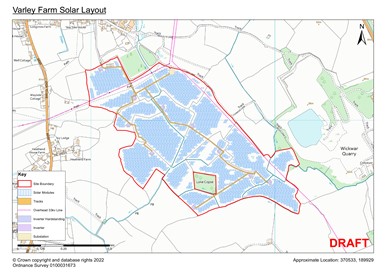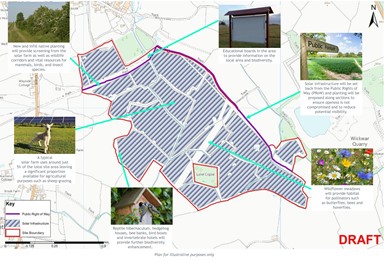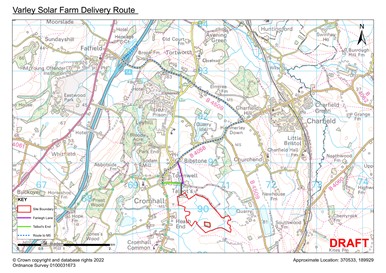This page is accessible on desktop and most mobile devices. For the best user experience, we recommend viewing from a desktop device. Information may not appear fully on some mobile devices. Electronic and hard copies of exhibition material are available, please contact us for more information.
Public Exhibition
We are keen to engage with the local community and as part of our pre-application consultation we held a public exhibition in July 2022, in the local area to enable people to find out more about the proposal and provide us with their views.
RES staff were on hand to answer any questions or queries, and comment forms were available to gather feedback. The public exhibition initiated a consultation period being run by RES to gather comments on the proposal. The closing date for comments was 5th August 2022.
All information provided at the public exhibition is also available to view below.
Why Solar?
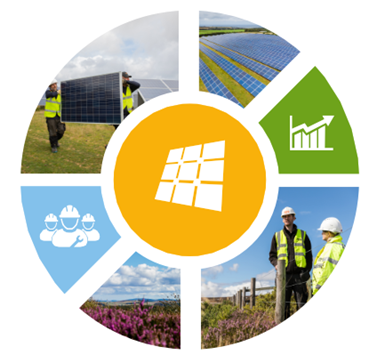 |
Renewable energy at lowest cost to the consumer1 Tackling climate change by supporting the UK’s target of net zero by 2050 Specifically designed to be dual purpose, combining continued agricultural use and renewable generation Quick to deploy Modern, efficient technology allowing more electricity generation in less space Diversification of agricultural business Significant biodiversity enhancement opportunities, supporting new & existing plant & animal habitats High level of public support2 |
Design Layout and Infrastructure
| The plan to the right shows the preliminary layout for the 25MW Varley Solar Farm, based on environmental and technical surveys which are underway. We are currently consulting on this layout and as such it is subject to change. In addition to the solar panels, the site infrastructure is expected to include:
|
Click on image to enlarge |
Environmental Considerations
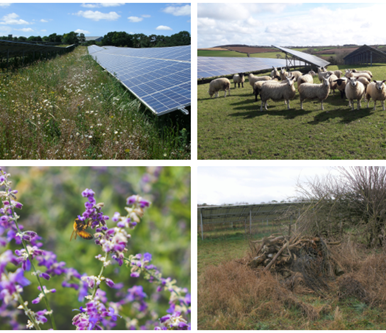 |
RES design their solar farms so that they will fit sensitively in the surrounding landscape. As part of the planning process, RES carries out a number of detailed technical and environmental surveys to ensure any potential impact upon the environment, landscape, heritage and local residents is appropriately assessed and mitigated. These assessments include:
The results of these surveys, along with feedback from the local community and stakeholders, are taken into account as the design of the solar farm is refined and finalised. The assessments will accompany any planning application that is made. |
Landscape, Ecology and Public Rights of Way
|
The plan to the right shows a preliminary Landscape and Ecological Management Plan (LEMP). Careful and detailed surveys will be carried out to assess any potential impact from the solar farm on the PRoW. Solar infrastructure will be set back from the PRoW and planting will be proposed along sections to ensure the sense of openness is not compromised and to reduce potential visibility. We welcome ideas and suggestions from the community on opportunities for improvements to the PRoW network which can be considered as part of our proposal. |
Click on image to enlarge |
Traffic and Access
|
Click on image to enlarge |
Access is an important consideration when selecting a potential solar farm site. A transport survey is ongoing and the plan to the left shows the site access point and the delivery routes currently under consideration. The traffic movements will be limited to avoid morning and evening peak times, where possible. There will also be a dedicated Community Liaison Officer to engage with local residents throughout the construction and operational phases, if the solar farm is consented. |
How a Solar Panel Works
|
Solar PV panels are typically made from silicon, which is a great semi-conductor, installed in a metal panel frame with a glass casing. The sun gives off light, even on cloudy days, and when these light particles, or photons, hit the thin layer of silicon on the top of a solar panel, they knock electrons off the silicon atoms which creates a direct current (DC) of electricity. This is captured by the wiring in the solar panels. Bifacial modules have two sides of solar cells, enabling additional energy generation from the diffuse light reflected off the grass, on the rear-side of the panels. They are working with solar developers to minimise electrical waste and recycle old panels in line with the Waste from Electrical and Electronic Equipment (WEEE) regulations3. |
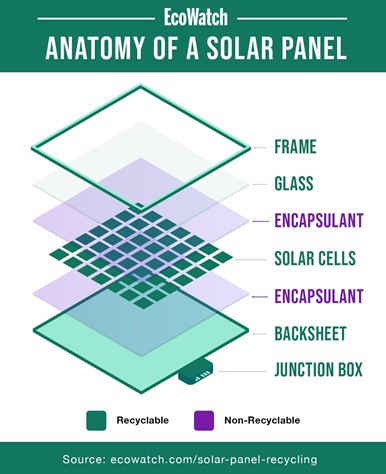 |
1 https://assets.publishing.service.gov.uk/media/6556027d046ed400148b99fe/electricity-generation-costs-2023.pdf

